Katherine reports:
Wednesday morning we spent time supporting Fundacion Sobrevivientes and the hunger strike they are doing to bring home the three Guatemalan children who were sold into illegal adoptions. Norma Cruz, the founder of Sobrevivientes, is leading the strike along with several mothers of the kidnapped children, as well as Shyrel Osborn, an American who moved to Guatemala 13 years ago as a missionary and started a home for children who have no other place to go. The strike started at 9am sharp and drew a crow of reporters and supporters in front of Guatemala City’s courthouse. We all received t-shirts with the phrase:
Enterremos Juntos
La corrupcion
La impunidad
Y La injusticia
Which translates into English as,
Together we will stop
The corruption
The impunity
And the injustice.
While wearing our shirts we held the banners for Hombres Contra Feminicidio (MIA’s chapter of the universal White Ribbon Campaign), and the Guatemala Peace and Development Network, which was also co-founded by Lucia and is the proud big sister of MIA.
Two of the three families that have illegally adopted the children have been notified of the circumstances under which they received the children, and one has vowed to fight until the very end to keep the child, while the other has gone into hiding so as not to lose the baby.
Lots of pictures were taken throughout the morning and several crews filmed us. Many people walked trough our demonstration on their way to or from the courthouse, so we hopefully got the message across. We were able to use the restrooms in the courthouse, but we had to take the t-shirts off before they would let us in.
After the day’s activities we went back to the strike for a few hours to show our support. The demonstration had been moved to a tent under an awning on the concrete square in front of the Palacio de Justicia (Plaza of Justice), a very ironic title given the state of justice in Guatemala. The media was gone, as were many of the supporters from the morning. People gathered in small groups to chat or make a trip to the Burger King across the square to use the restrooms.
Human trafficking is not a new issue for Guatemala, especially the illegal adoption industry. We hope for the sake of the people not eating and for the families involved that these children will be brought back to their home where they belong. Bringing these children back would be a great start to fighting this illegal industry and asserting the basic human rights of the Guatemalan people to the world.
Marlene Reports:
The MIA delegation met with Ana Moraga, the director of MuJER, a non-profit organization that aims to empower sex workers in Guatemala City. Ana gave an overview of the different services that MuJER provides. For instance, the organization puts on workshops that address several critical issues, such as self-esteem building and protection from violence. Furthermore, MuJER offers classes that provide skills training for sex workers in several areas. These classes include cosmetology, computers, English, and primary education. One of the more popular classes shows the women how to make jewelry that they can sell to supplement their income.
In addition to discussing MuJER’s activities the group also addressed sex workers’ current situation. Three women that have benefited from MuJER’s work were part of the discussion and graciously answered our questions. Among several themes that emerged from the discussion was sex workers’ vulnerable status in the country. The Department of Health regulates the sex work trade, although sex work itself is illegal. A recent human trafficking law meant to protect children and youth prohibits sex work in bars and brothels, which had previously offered a minimal level of protection. Therefore, sex workers are in a precarious position due to the clandestine nature of their work.
Another theme that came up and that demonstrates another level of vulnerability is the fact that about 60% of sex workers that MuJER works with are not Guatemalan citizens. Most are migrants from Honduras, El Salvador, and Nicaragua. These women often lack documentation that allows them to remain legally in Guatemala. Furthermore, officials continually demand to see a work visa which migrant sex workers cannot obtain since their trade is illegal. Therefore, officials subject sex workers to arbitrary and discriminatory policies since they do not have any kind of legal protection.
In a country where women as a whole have a subordinate position in society, sex workers are among the most marginalized group at both the social and economic levels. Two of the women who visited us were single mothers. They were forced to take sole responsibility for their children’s welfare after their husbands abandoned the family. One of the women emphasized that she had tried to work as a waitress but simply could not make ends meet with the dismal salary that the job provided. By choosing to work in this sexual commerce, these women engaged in one of the more economically viable options available to them, which brings us to one of MuJER’s key objectives, which is to provide skills training that simultaneously empowers women. MuJER emphasizes that sex work is a choice. The women, due to a range of circumstances, weighed their options and decided that sex work was the choice that worked for them at these particular moments in their lives. Therefore, while the organization teaches them skills that could eventually lead to alternative employment strategies (all three women brought jewelry they designed and the delegates went on a mini shopping spree!), it simultaneously promotes the development of self-awareness and stresses women’s autonomy.
Katherine reports again:
Wednesday evening before dinner, Carlos Ibanez, an expert on human trafficking in Guatemala, joined us at our hotel to give a brief overview of the trafficking infustry in Guatemala.
There are three main characteristics of human trafficking: 1) loss of freedom and liberty, 2) others gaining from one’s exploitation, and 3) the trafficked person is taken from their native culture and home. Currently, 7,000 Guatemalan children are being trafficked and sexually exploited.
The laws and justice systems of many countries have not caught up to this issue of modern day slavery, and Guatemala is no exception. Only recently have they adopted a law against trafficking, and there is yet to be a case taken to court using the new law. Many people in Guatemala, as well as the anti-trafficking community, agree that it is not the law itself that will make a difference, but rather the enforcement of the new law that will being an end to trafficking.
Because of Guatemala’s unique location, sharing borders with four other nations and between two oceans, Ibanez emphasized that it is an ideal place for traffickers to target their victims.
Many people play a role in the trafficking of humans, so cracking down is often a long and sometimes complicated process. Understanding the various roles and how we as U.S. citizens benefit from the trafficking is crucial to understanding how to fight smugglers and end human trafficking.







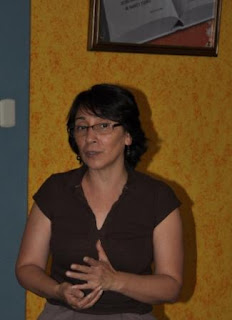
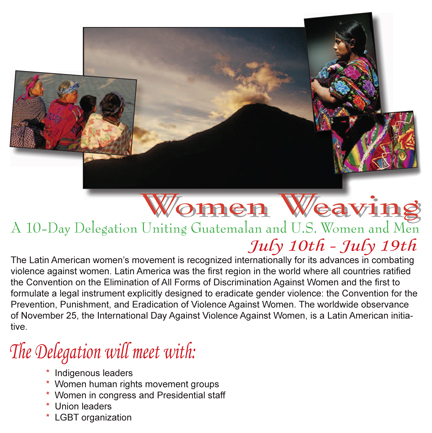
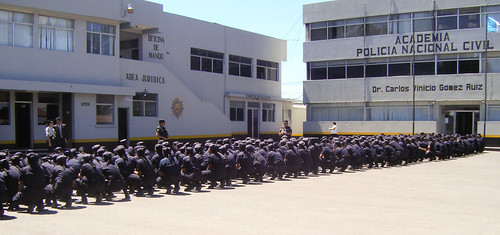
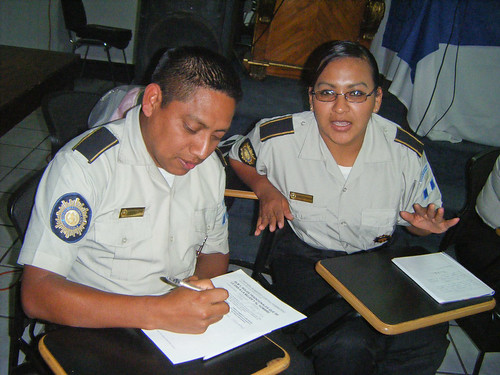
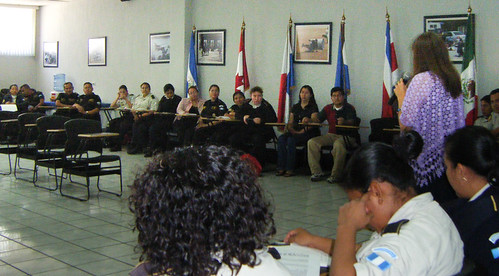


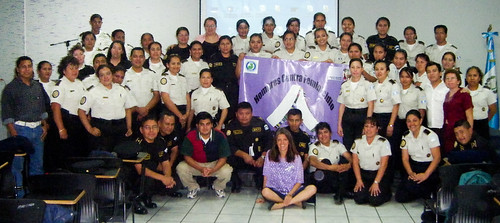
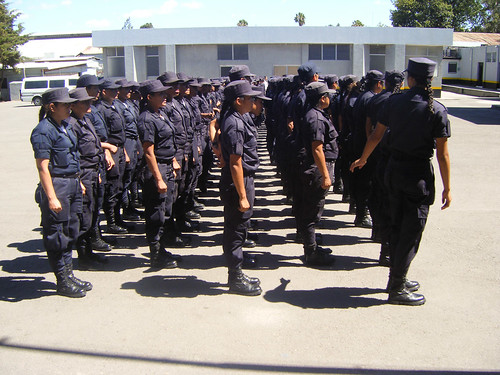
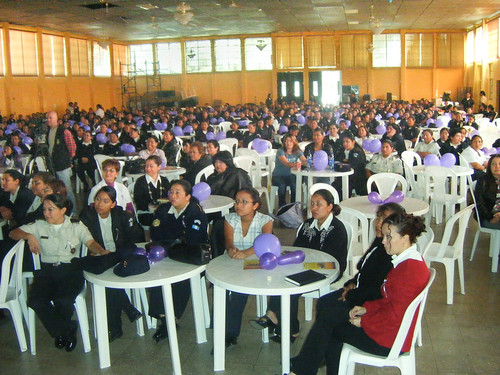




 La radio vuelve a sonar y se escucha otra canción. “Tú me admiras porque callo y miro al cielo, porque no me ves llorar, y te sientes cada día más pequeño y esquivas mi mirada en tu mirar”. (MOCEDADES)
La radio vuelve a sonar y se escucha otra canción. “Tú me admiras porque callo y miro al cielo, porque no me ves llorar, y te sientes cada día más pequeño y esquivas mi mirada en tu mirar”. (MOCEDADES)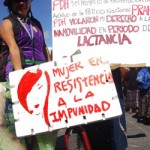 La radio sigue sonando, y ahora se pone muy norteña: “En la puerta de la iglesia llora un niño, en su interior una boda celebraban. En una choza una mujer se está muriendo, ella es la madre de aquel niño que lloraba. (…) Dios te bendiga y te perdone padre ingrato, siguió llorando con el alma hecha pedazos.” (TIGRES DEL NORTE)
La radio sigue sonando, y ahora se pone muy norteña: “En la puerta de la iglesia llora un niño, en su interior una boda celebraban. En una choza una mujer se está muriendo, ella es la madre de aquel niño que lloraba. (…) Dios te bendiga y te perdone padre ingrato, siguió llorando con el alma hecha pedazos.” (TIGRES DEL NORTE)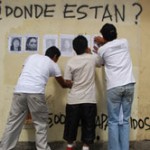 “No te engaño al pedirte perdón, por el daño que pude causarte, no des vueltas buscando un culpable: culpable soy yo. Por haberte tenido olvidada, por dejar que muriera el amor, por haberte negado mi mano: Culpable soy yo“. (JOSÉ LUIS RODRÍGUEZ, EL PUMA)
“No te engaño al pedirte perdón, por el daño que pude causarte, no des vueltas buscando un culpable: culpable soy yo. Por haberte tenido olvidada, por dejar que muriera el amor, por haberte negado mi mano: Culpable soy yo“. (JOSÉ LUIS RODRÍGUEZ, EL PUMA)

 Proud Founder Member of the Guatemala Peace and Development Network
Proud Founder Member of the Guatemala Peace and Development Network